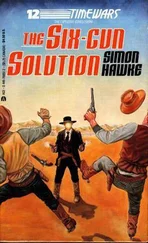The material basis from which such designer visions are fashioned is one’s store of memories and personal knowledge of the world. According to my interpretation, the Other is able to re-form idiosyncratic information in order to communicate in a highly personal way that one would likely be responsive to. Such creative artistry represents the meta-language spoken by the Other, the visions representing a higher, more informationally rich symbolic language being conducted deep within the innermost sanctums of the psyche. That which needs to be shown is shown. That which is poised to fall into place does fall into place. Information in the brain is like some living thing.
If this is starting to sound too far-fetched, it is only because the terminology is new. What I am calling the Other is a dynamic information-integration process brought to life within the psilocybin-infused brain. To put it another way, the Other can be understood as an information-patterning phenomenon that spontaneously emerges when certain dynamic neurochemical conditions prevail, in the same way that a vortex pattern may spontaneously emerge in water if certain dynamic conditions prevail. The Other appears to be a higher, more integrated manifestation of the human psyche, so full of profundity and purposeful import that it can be considered to be fully autonomous and dissociated from the individual self or ego.
It is hard not to believe this when one has come to directly experience psilocybin visions. Think of the minister from Harvard’s Good Friday Experiment who had profoundly religious visions of Christ. This is the way in which the Other “spoke” or “introduced itself” to him. Its language is that of symbols and images, creatively juxtaposed to convey some vibrant meaning. In the depths of the minister’s psyche neuronal informational patterns of incredible complexity arose, informing him in a soulful way. Those particular arrangements of psychological information were generated out of the informational stores of his own personal psyche in a style that would be highly meaningful to him in particular.
The Other thus represents a name, or label, for the kind of information processing underlying the visionary state. An apparent communion with the Other demonstrates the inherent property of neuronal information to purposefully organize itself into streams of ideas laden with profound meaning. If one can conceive of the mind as being a kind of informational process, one can equally envisage the Other as being an informational process. Whatever the actual neuronal firing mechanisms involved, it seems likely that the self-organization, or forced coherence, of immense amounts of information underlies the felt presence of the Other.
The greater the facilitation of informational organization and informational coherence, the richer in meaning the resulting patterns will be. In a way, it is somewhat analogous to running a defragmentation program on a computer, whereby disconnected but related data are collated and organized in a more integrated way. In a brain/mind system under the influence of psilocybin, such a defragmentation process leads to the formation of mythical symbols and icons because this is the only way in which massive amounts of related information can be visually expressed . Because there must be limited ways in which huge amounts of information can be integrated—in other words, there are logical constraints—then this again explains the existence of universal symbology and universal mythology.
But why exactly should the focused embracing of large amounts of psychological information be under logical constraints? Could not any old image or icon do? Not really. Think of some short story and imagine trying to sum up the theme in one sentence or in a single visual image, the moral of the story so to speak. Although there may be a thousand and one ways of telling that story, to concentrate the moral (the point or overall pattern that connects the elements of the story) into one meaningful sentence or one meaningful image automatically constrains us to use certain key words or certain pictorial icons.
Consider also what it is like when one searches for a word that one knows will express what one wants to convey; that frustrating… what is it called? Ah yes, that tip-of-the-tongue moment. The word or term we look for is a logical consequence of what we need to express, and we might well be constrained into using that one word to capture the exact meaning we wish to communicate.
Likewise, in the language of the Other, there are certain types of meaning (large patterns of information) that can be expressed only with specific symbols and icons. The symbols and visual representations are highly organized fields of information. Such symbols and their drawing together into coherent progressing visions therefore reflect the ongoing language being “uttered” by the higher information-organizing processes of the Other.
We can also refer back to R. Gordon Wasson’s vision of a mythical beast drawing a chariot or of the colossal doors opening. These are obviously powerful symbols teeming with inherent meaning, especially when perceived as close as is possible—that is, directly behind closed eyes while under the superconscious spell of the mushroom. These visions are not like simple pretty pictures; they are more like a confrontation with ideas and symbols issuing from some highly organized source of intentionality—like, say, the Platonic realm of pure Ideas, an inference you will recall that Wasson himself made in his attempts to come to terms with his experiences. The thing is, this Platonic realm, if that is what one chooses to call the transcendental Other, is not static, like an archival system. Instead, it is able to inform one through a dynamic stream of intentional information in which visual symbology dominates.
Various types of symbol can therefore be considered elements of a higher language, a language not of the individual ego-driven mind but of the communicating Other. The symbols are amalgamated concentrations of information coming to life in a mind illuminated by visionary alkaloids. Or, to use Huxley’s terminology, the informational forms are transmitted via the psilocybinetic brain. As voluminous torrents of information “struggle” to integrate and coalesce, evermore elaborate forms and patterns emerge, and these are experienced as the felt presence of the Other actively communicating in a language of potent symbolic visual imagery. Information appears as if alive and intent on self-organization.
The Many Guises of the Other
As Terence McKenna repeatedly pointed out, it is quite common, for Westerners at any rate, to perceive UFO or extraterrestrial motifs in psychedelic visions. McKenna has suggested that the UFO is the Other in the guise of a contemporary symbol. According to McKenna, the Other is normally so remote from us that it dons the mask of the UFO in order to express itself, its Otherness.
Since the 1950s, a plethora of sci-fi films have focused on alien visitations to Earth. The predominant theme in these sorts of entertaining fantasy is the incredible impact that an alien presence would have on humanity. It is a modern reworking of the ancient religious idea of divine intervention. Some great alienesque force suddenly erupts in the midst of our culture in a way that upsets, or radically alters, human destiny. Everyone would have to take notice. People would, willy-nilly, be forced to cease their everyday business for a spontaneous alien-inspired holiday or two. Everything would have to change. Alien visitations are dramatic. They negate everything else.
Obviously, then, the UFO can be understood as a modern icon, an immensely powerful Western symbol packed with meaning. It also highlights the way to think about information, for, in terms of information, the archetypal UFO is the center of a whole web of psychological relations and associations. It embodies a concentration of information. It expresses a powerful set of psychological associations. As a simple word, UFO embodies information in the context of the English language, whereas as something visibly beheld in an entheogenic vision, the UFO, or indeed any kind of image of advanced alien technology, represents an utterance in the symbolic language of the communicating Other.
Читать дальше










